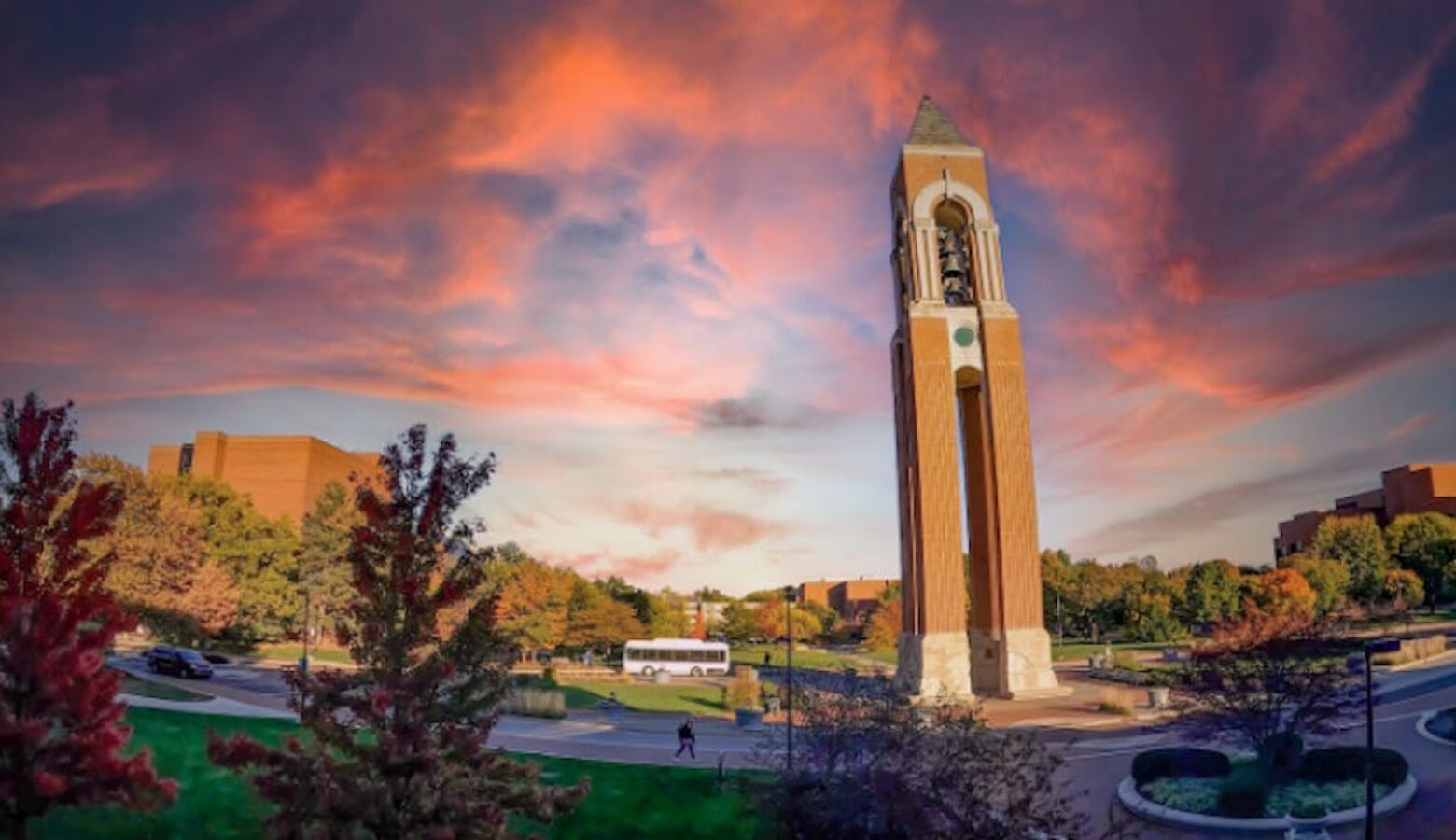Schafer Tower Carillon: A timeless musical legacy at Ball State

Ball State is well known for many things across Muncie. It has the iconic beneficence statue plastered all across campus, and its mascot, Charlie the Cardinal. But nothing is more iconic than Schafer Tower, which splits McKinley Ave in two and stands tall as a centerpiece for campus.
First built in 2001 and officially opened in 2002, Schafer Tower stands 150 feet tall and is topped by 48 bells. Each one is custom-made and etched with the names of generous sponsors. The architect Eric Ernstberger, who was commissioned to design it, aimed to create a unique design that would stand apart from the other bell towers on campuses across Indiana, aiming for the tower to live up to the legacy left by the Schafer family.
Phyllis and Hamer Schafer were charitable donors to Ball State while they were in Muncie, setting up an organization to keep their ideals alive and to continue sponsoring programs at Ball State. Above all else, they valued keeping strength and charity, promoting programs that measurably better their communities.
Geoffrey S. Mearns, the 17th president of Ball State, has often worked with the Schafer Foundation on projects regarding arts and entertainment or charitable donations.
“I know folks who serve on the Schafer foundation board and certainly feel it’s important for us to recognize their legacy; their ongoing contributions. So Schafer Tower is one enduring and visible manifestation of that legacy,” Mearns said.
The biggest testament to the Schafers is the bell tower, which could not have been built without their help. Behind its green-tinted windows that depict beneficence, every quarter hour from 7 a.m. to 7 p.m., the bells’ sounds reach all across campus. Climbing the 100 steps to a small room at the top of the tower, a carillon sits.
The carillon is a large instrument that closely resembles a pipe organ. However, with only 170 of them across the U.S., compared to thousands of organs, it is a lot less popular. What it lacks in popularity, it makes up for in its diverse playing capabilities. Carillons can be arranged with a wide range of octaves, and the one at Ball State covers a four-octave scale, allowing for a large variety of music to be played.
“ I would say both the chiming, as well as the music, is a source of inspiration, it’s a source of pride. It enriches the campus experience not just in terms of what we can see but what we can hear. So it’s attractive to those other senses, and we all know that music affects people a little deeper; a little differently,” Mearns said.
Playing the carillon is no easy task. It takes years of practice and specialization to become a carillonist. John Gouwens, who plays the carillon in Schafer Tower, has had a passion for music and the carillon since he was almost 2 years old.
“An interest in chimes, bells and clocks; I’ve got a big collection of clocks. And an interest in music, all of that was there from the get-go,” Gouwens said.
As the main carillonneur and organist at Culver Academy from 1980 to 2019, Gouwens’ extensive history with the instrument attracted him to Ball State during the construction of Schafer Tower. During the tower’s construction, Gouwens was often consulted on matters involving the carillon. After the completion of Schafer Tower, he visited campus to teach a course on how to play the carillon; even going as far as to write his own book for students to use because he didn’t think there was a good single source on how to play.
Over the years, as a teacher, Gouwens would often stay on campus after his classes to play an hour of music in the bell tower. He boasts that for one year, he played an hour of songs every day, and not once did he ever play the same piece twice.
But as time progressed, so did advancements in technology, which led to innovations in automation. Now, the bells of Shafer Tower are set on a timer system where magnets pull back the pendulums and sound off every quarter hour through software. Gouwens’ performances then began to frequent Ball State less and less.
“Making a modification on it removed all the mechanisms that would allow you to play with any kind of expression, so it’s all electric action. So for those of us that play the carillon, that isn’t the carillon anymore because you can’t play it musically, which is important because you can’t do things that give the music any sort of emotion,” Gouwens said.
Even though he no longer needs to be in the tower every day, Gouwens enjoys making trips to campus and climbing up to the small room in Shafer Tower to add that special human touch to the carillon’s music, creating a unique atmosphere and culture that can only be found at Ball State. Gouwens still visits during homecoming and graduation to play, providing the visiting families and alumni with something to make the trip extra special.
Contact Aiden Murray with comments at aiden.murray@bsu.edu.

